Troy VI-VII
Q22647Ilion or Troy: town in northwestern Asia Minor, famous for the legendary Trojan War, in which a coalition of Mycenaean warriors captured the city of king Priam.Homer's Iliad deals with an episode from this war.
Troy VI
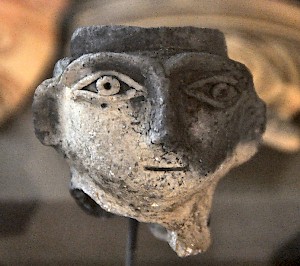
Troy VI is almost certainly the "Homeric" Troy. In Hittite sources, it is called Wilusa, which is the name that Homer also uses: Ϝίλιος, Wilios, from which names like Ilios and Ilion were derived when the Greeks no longer pronounced the W. The name Τροίη, Troy, was also used, and resembles another word known from Hittite texts: T(a)ruwisa. There's nothing strange about these double names, which may originally have referred to the citadel and the lower city, and were kept by Homer because it offered him some metric freedom.
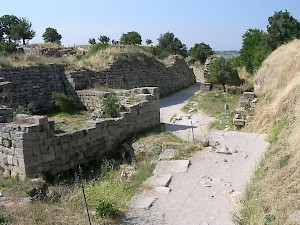
Troy VI and VIIa existed from c.1700 to c.1200 and cover the Middle and Late Bronze periods. This is the city about which Homer thought when he created the Iliad, but it is difficult to see how his storyabout a heroic expedition from the Greek mainland fits into the real history of the excavated city: the grand Troy VIh was destroyed by an earthquake, while Troy VIIa, although sacked, fell when it was no longer possible for a coalition of Mycenaean warriors to organize an expedition to the other side of the Aegean Sea.
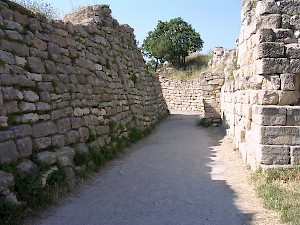
The citadel of Troy VI measured about 200 by 300 meters. The southern half of its walls have been excavated; the northern segment has been destroyed partly by erosion, and partly by Schliemann's inexpert digging techniques. The center, where the temples and palace must have stood, was already destroyed in Antiquity, when the foundations of Troy VIII were dug.
In the 1990s, the lower city, the existence of which had already been suspected by Schliemann, was partly excavated, including another wall. With this lower city, Troy VI measured about 270,000 square meters and may have had between 5,000 and 10,000 inhabitants: a substantial city by Bronze Age standards.
Wilusa

Wilusa is mentioned in several Hittite texts. The first reference is from the reign of king Tudhaliya I (r.1420-1400), who has a conflict with Assuwa, a kingdom with several vassal states in the west. Among the vassals were Truwisa and Wilusija, a Luwian word that means "the land of Wilusa". This is a clue that the Trojans spoke Luwian; other clues are personal names (e.g., Priam) and the fact that in the level of Troy VIIb, a seal was found with a Luwian inscription. (This does not rule out the possibility that more than one language was spoken.)
After Tudhaliya's campaign, and perhaps because of it, Assuwa disappears from our sources; instead, we hear of the Arzawa countries: Seha (the valleys of the Caicus and Hermus), Haballa (the interior), and Mira (the valley of the Meander). Wilusa appears to have become independent, and it is probably no coincidence that after 1400, the city was rebuilt (Troy VIh) on a grand scale, with an impressive wall of some ten meters high.
In the fourteenth century, the Hittite kings were occupied in the east: Tudhaliya II (r.1390-1370) conquered Cilicia and Šuppililiuma (r.1344-1322) defeated Mitanni. It was only in c.1318 that king Mursili II became interested in the west again and he took no half measures: he sacked Millawanda (Miletus) and captured the capital of Mira, Abasa (Ephesus). The three Arzawa countries were from now on vassals of the Hittite Empire.

Wilusa remained independent, and it is unlikely that its kings would have liked to intervene in this conflict, as their city was destroyed by an earthquake in c.1300. The city was rebuilt: Troy VIIa was essentially the Late Bronze continuation of Troy VIh.
Almost immediately after the rebuilding, Wilusa became involved in a major international crisis. In c.1290, an Arzawan adventurer named Piyamaradu tried to become king of Mira. He was supported by one Tawagawala, the brother of the king of a country named Ahhiyawa. Tawagawala renders the Greek name *Etewokleweios, better known in its classical form Eteocles. Ahhiyawa is a rendering of Achai(w)a: Greeks living in the Greek mainland and on the shores of Asia. In other words, a Greek ruler was intervening in the affairs of western Asia.
Among the Ahhiyawan cities was Millawanda, from where Tawagawala supported Piyamaradu. The rebel now attacked Wilusa, forcing its king Alaksandu to ask for help from the Hittites. (The name Alaksandu resembles the Alexandros of the Iliad.) The Hittite king Muwatalli II first ordered the king of Seha to support Wilusa, but when he was defeated by Piyamaradu, the Hittite armies intervened directly. After this, Wilusa was a vassal of the Hittites. The treaty, which was concluded before 1272, survives in no less than six copies; the terms were guaranteed by a Trojan god named Apaliunas - Apollo, in other words.
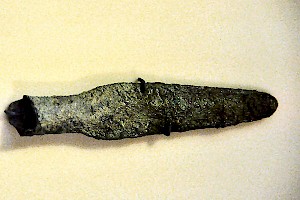
It is certain that the support that the Ahhiyawans offered to Piyamaradu, was not just moral, but also military, because the Hittite ruler Hattusili III (r.1264-1239) refers, in a document known as the "Tawagawala letter", to an armed conflict between himself and the king of Ahhiyawa - a conflict that had in the meantime been settled peacefully, which gives Hattusili confidence to call upon his "brother" to help him solve the Piyamaradu affair foregood.
It is possible that the (indirect) military support of the king of Ahhiyawa to Piyamaradu is the historical nucleus of the stories about the Trojan War, but we can be sure only when we will have a tablet that mentions an Ahhiyawan king actually attacking Wilusa.
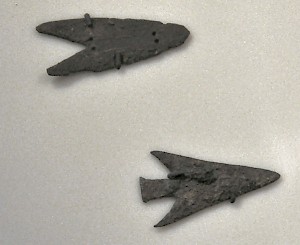
Finally, there is evidence that in the decade 1250-1240, king Walmu of Wilusa was dethroned by a relative. The Hittite king asked king Tarkasnawa of Mira to help Walmu, but the exact outcome is not known.
With this piece of information, our historical knowledge of Troy VIIa comes to an end. Archaeological evidence, however, is sufficiently strong to be sure that in c.1200, the city was sacked. We do not know by whom, but the first quarter of the twelfth century is a period of general upheaval, which is called the age of the Sea People.
Troy VIIb
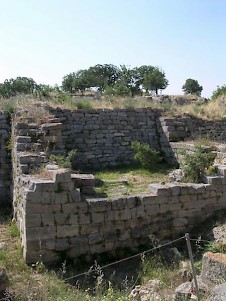
Although the mighty walls of Wilusa still stood, Troy VIIb was not a real continuation of mighty Troy VI-VIIa.The Bronze Age had ended; the Iron Age had began, and we see new types of objects, like fibulae. Ceramics were no longer made on a wheel, and betray strong influences from the Balkans. The houses were different. There may have been a connection between Troy VIIb and the Phrygians, who in this age migrated fromThrace to Asia Minor: Troy may have been a first stop during this migration.
Troy VIIb was abandoned in the early tenth century BCE. Its walls were still standing, eight meters high, and its sanctuaries and its well house must have been recognizable. Writing probably in the eighth century, Homer would refer to them.
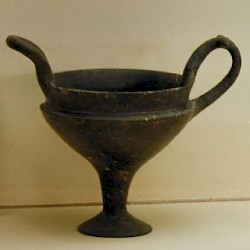 Troy VI, "Minaean" pottery |
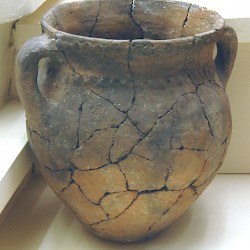 Troy VIIb, Pottery |
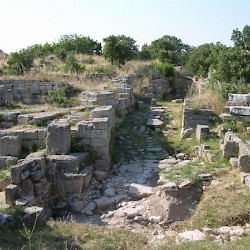 Troy VI-VII, South gate |
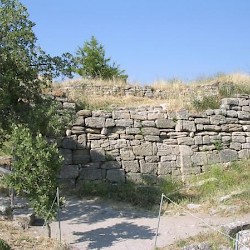 Troy VI, House |